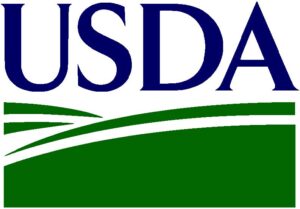Every five years Congress is charged with drafting a new Farm Bill. Actually titled the Farm Security and Rural Investment Act, the Farm Bill is an omnibus bill that includes many of the laws, policies and provisions that govern federal farm support, food assistance, agricultural trade, marketing, and rural development for the entire country. While many would argue that much of the Farm Bill is outdated it is more common that any new Farm Bill is actually a fine-tuning of the existing document. The sheer size and number of programs included pretty much guarantees that the document will never be rewritten from scratch.
What surprises many of us is how broad the Farm Bill is—it covers much more than farm policy. The current Farm Bill is broken into ten titles, with each title being a chapter that is roughly organized by a general policy theme.
The most hotly debated item in every Farm Bill is Title I, the Commodity program, which specifies direct payment and production marketing loans for select products. The hot issue in every recent Farm Bill debate is the provision that nominally limits annual crop payments to $360,000 per person.
Title II of the Farm Bill addresses Conservation programs designed to help farmers adopt environmentally beneficial farming practices. A partial list of the programs includes the grasslands reserve program, EQIP, the conservation security program and a host of programs protecting wetlands, wildlife and environmentally sensitive land.
Title III, the Trade policy covers export programs but also includes foreign food aid and the International Food for Education and Child Nutrition.
Nutrition Programs, Title IV of the Farm Bill, covers domestic nutrition programs such as the food stamp program, emergency food assistance, and the commodity supplemental food program. The intent of these policies is to ensure food security for all by getting food to those unable to purchase it at the market price.
Title V, the Credit title, authorizes funding levels for farm credit programs which provide funds for both direct loans and guaranteed loan programs. This title is particularly important in the ongoing debate of how farmland can best be transferred to a new generation of farmers without unduly disadvantaging either the exiting farmer or the beginning farmer.
The Rural Development Title, Title VI, includes the value-added ag market development grant program, rural infrastructure such as broadband services, municipal water and septic projects as well as the Rural Business Investment Program.
Title VII, the Research and Related Matters title, funds university research programs as well as the cooperative extension program. Each Farm Bill designates certain areas as priority topics but the Congressional appropriations actually dictate much of what can be accomplished.
Title VIII, Forestry creates programs to help private forest landowners manage their forests sustainably but this title also includes assistance to local governments for fighting wildfires.
Title IX, the Energy title, was added in the last Farm Bill. It covers programs related to bioenergy, renewable energy grants for farmers to improve their energy efficiency.
The final title, Title X, Miscellaneous is the catchall title for a wide variety of programs that include country of origin labeling, animal health protection laws, appropriations for socially disadvantaged farmers, and biotechnology education.
For the past year, USDA has been gathering broad input on what the next Farm Bill should contain. Thousands of individuals have already weighed in on a variety of issues ranging from how best to support beginning farmers to what the priorities should be for rural communities.
If you would like to review the comments that were recieved or read some of the resulting white papers, you can do so via the USDA Farm Bill Forums website at http://www.usda.gov/farmbill. The website will continue to be updated so log on today and join in on the debate that will result in the next Farm Bill.
Introduction to the 2007 Farm Bill
This entry was posted in The USDA Farm Bill. Bookmark the permalink.






